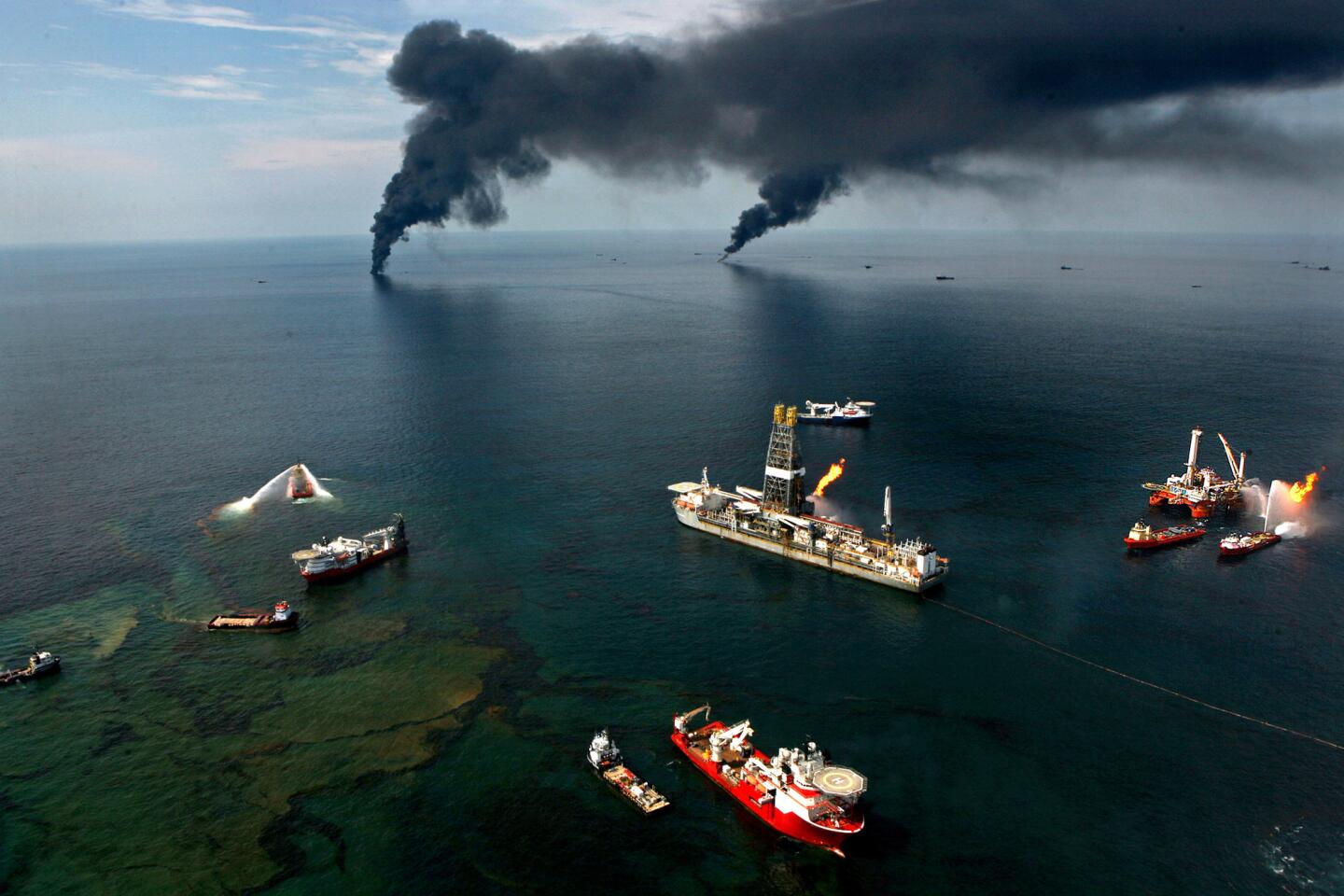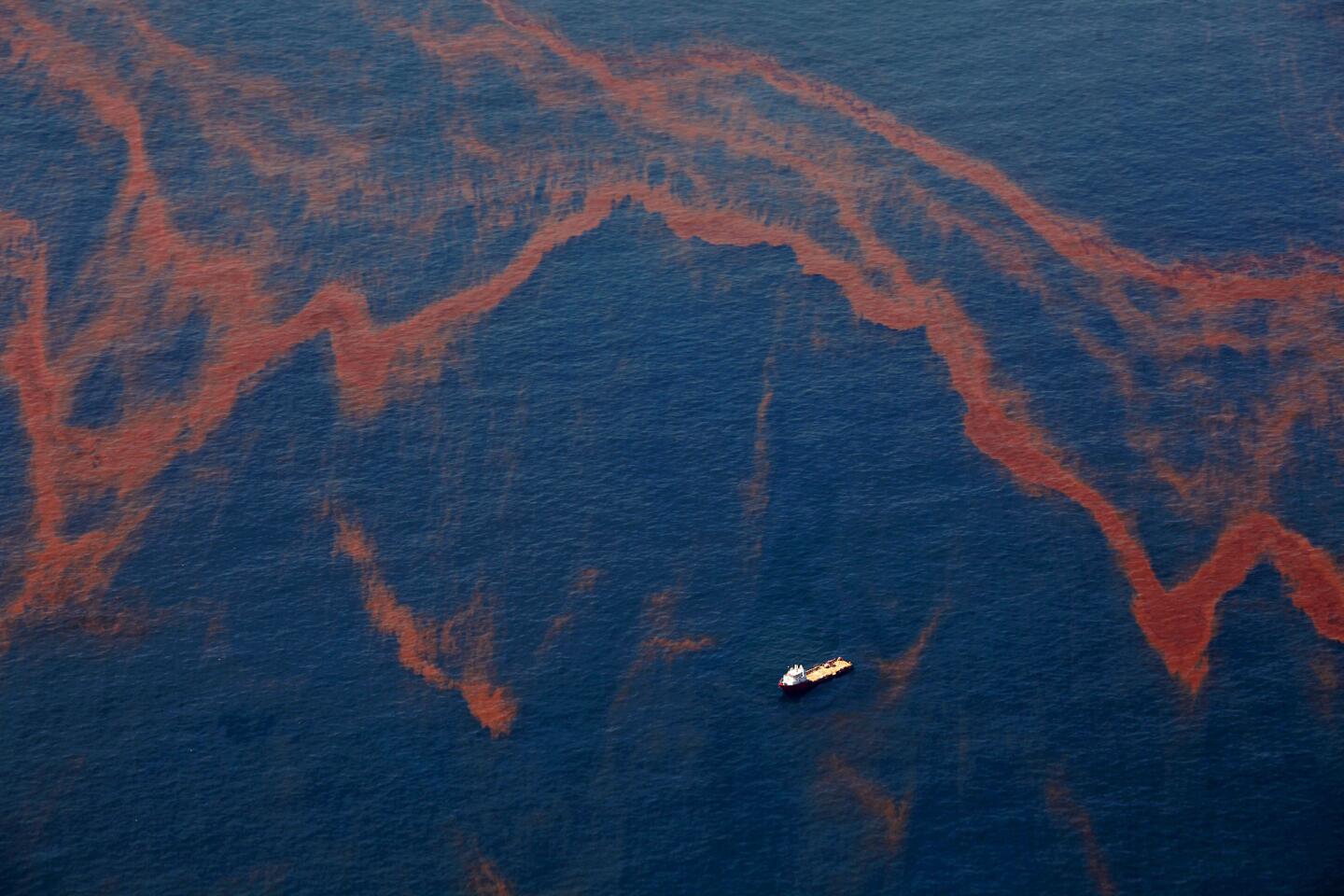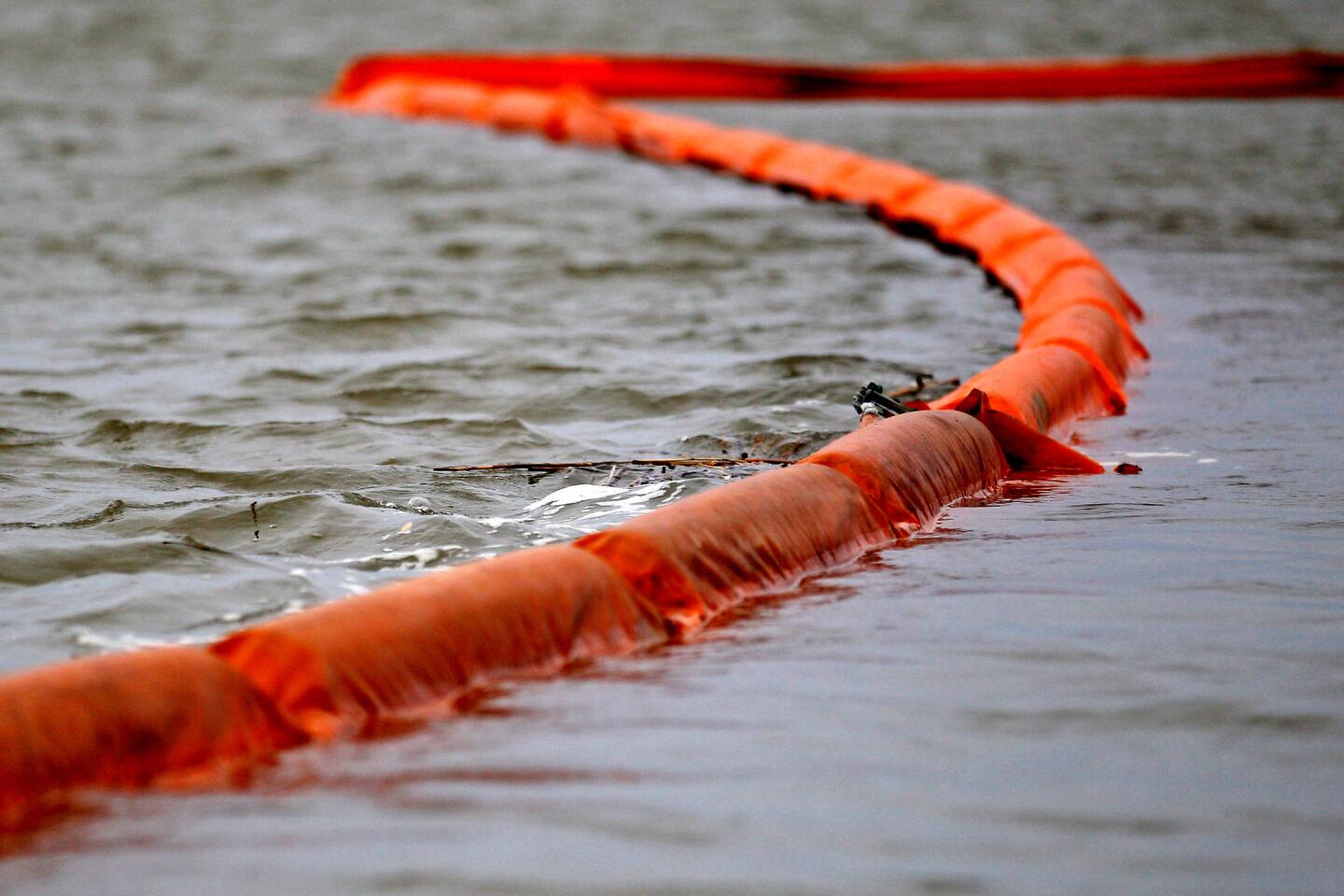A strong voice for environmental action in Louisiana’s Cancer Alley
- Share via
NEW IBERIA, La. — The police asked the right question.
“Can you think of anyone who would want to do you harm?” investigators asked Wilma Subra, trying to understand who might have fired a gun at the diminutive grandmother.
Enemies?
Subra could arrange them alphabetically, or geographically, or in descending order according to how much her work as an environmental chemist had cost them in money or public embarrassment.
She had gone after so many corporate polluters over the decades, the question had just too many possible responses.
Authorities never found the person who shot at her while she was working at her desk by the front window. The soft-spoken crusader’s response to the threat was to put bars on her windows, move her desk to the back of the house — and keep going.
Seven years later, at 69, Subra is still working to rein in environmental degradation along Cancer Alley, an eye-watering corridor of more than 150 industrial facilities along the Mississippi River between New Orleans and Baton Rouge that produce a quarter of the nation’s petrochemicals.
She’s a winner of a MacArthur “Genius grant” who totes her grandchildren to public hearings, giving them crayons to scribble on the back of scientific papers. She’s a fighter who has taken on refineries, chemical manufacturers and oil and gas companies, including BP over its cleanup of the Gulf of Mexico oil spill in 2010.
Most important, admirers say, she’s a dedicated enabler, teaching people in some of the nation’s poorest communities to help themselves by using the latest technology to track air and water quality in their own backyards.
“What separates Wilma from other scientists is she’s taking it to the next step, allowing communities to have a voice,” said Robert Bullard, author of “Dumping in Dixie,” a book about the South’s toxic environmental legacy. “She makes real change on the ground.”
::
Subra has lived in the oil patch her whole life. When she bumps into people she grew up with or attends class reunions with her husband, Clint, she sees two sets of people in the room:
“The ones who look their age and the ones who look so old. The old-looking ones work in oil and gas or the chemical plants. You can clearly see the difference — the pallor of their skin, how shriveled.”
Subra understands that people here live near chemical plants because they don’t have the money to leave, and the workers won’t leave because of the money they can make.
“They enjoy the income, because they can hunt, they can fish, they can go to LSU games and have big-screen TVs and campers and all this,” she said.
They also know the work can be damaging to their health.
“The guys who work in the plants will tell you they know it killed their dad,” she said. “They know it killed their mom because the dad came home with contaminated clothing and the mom washed the clothes.
“But I’ll tell you what, they don’t want their children working in the plants.”
By any measure, this is one of the least healthy regions of the United States. Last year Louisiana was ranked 49th in overall health and had the third-highest rate of death from cancer, according the United Health Foundation.
“You can predict by ZIP Code who is most likely to get the worst of the pollution,” Bullard said. “The South has a legacy of unequal protection — why would the environment be any different?”
::
Behind the wheel of her well-worn Chevy Impala on a recent morning, Subra navigates Highway 14 past oil refineries, natural gas transfer stations, bubbling waste ponds and oozing toxic dumps.
Exhausted towns huddle along the two-lane blacktop that skirts the Gulf Coast. They are known as “fenceline communities,” because residents breathe whatever belches from the nearby smokestacks and drink what the companies release into the local water supply.
“My goodness, look at that,” Subra said, pointing at a belching smokestack and reeling off a list of the chemicals wafting into a light blue sky.
Subra drives past a large, boxy facility surrounded by barbed wire, pointing out the Gulf South Research Institute where she worked for 14 years doing pharmaceutical and biotech testing for private businesses and the federal government.
Since then, she has worked as an EPA contractor as part of an emergency response team sent to toxic spills and other disasters to perform quick assessments. She’s now helping the federal agency develop water toxicity tests for the regulation of hydraulic fracturing.
Subra has a business — commercial chemical analysis — that she neglects. The work that compels her is the pro bono help she has given to poor communities exposed to toxins.
“If it’s an affluent community, you will have people with money who will speak out, who will have connections,” Subra said. “The minority and the poor, for the most part, don’t have a voice.”
The energy industry, in particular, has frequently been across a corporate conference room from Subra. Tom Stewart, executive vice president of the Ohio Oil & Gas Assn., calls Subra “a ferocious advocate.”
“She worries people on my side of the fence because she’s very well-respected, and therefore she’s effective,” said Stewart, who has worked with Subra during reviews of state oil and gas regulations. “We don’t always see eye to eye. However, I hold her in very high regard.”
During the BP oil spill off the Louisiana coast, Subra joined with the Louisiana Environmental Action Network to prepare for oil reaching land. She recognized that high winds hitting the 68,000-square-mile slick were carrying the crude into the air. She warned of the potential danger from dispersants used to break up the slick and pushed for authorities not to burn off the oil when winds were blowing toward land.
After determining that dispersants contained neurotoxins, Subra demanded protective gear for the cleanup workers. Federal authorities and company officials had argued that the dispersants were safe and warned workers they would be fired if they wore the gear.
Subra prevailed. Eventually cleanup crews wore the protective coveralls, but even that couldn’t fully protect them from the Gulf’s toxicity.
“The husbands came in with it all over them and the wives washed their clothes,” Subra said. “The husbands had symptoms and wives had symptoms: headaches, nausea, difficulty breathing, decreased lung function. Memory loss.”
Mike Taylor worked for BP on its spill response and recalled a time he helped company lawyers prepare for a meeting with Subra.
“They thought highly of her, and they expected her to be a hard-nose,” Taylor said.
She was.
He’s up against Subra again, this time working as a contractor with Texas Brine, an oil and gas service company whose operations at nearby Bayou Corne created a massive sinkhole, leading to the evacuation of hundreds of residents last summer.
Taylor described many of the groups opposing the company as “anti-business” and “anarchists.” But Subra, he said, “is the voice of reason. She understands the rules and regulations because she’s helped formulate some of them.”
::
More than once, Subra says, she has been in a legal proceeding, sitting across from an oil company executive who dismisses her reports of widespread illness as “hysterical.” She then receives a call from that executive at her home at night, anxiously detailing the rashes and breathing problems experienced by his own children.
“Did we do this?” they want to know. Subra quietly explains which chemicals might be to blame and what information to give the family’s doctor.
One of Subra’s worst-case scenarios is Mossville, which has the densest concentration of industrial facilities of any region in Louisiana.
Companies there manufacture vinyl chloride, which produces dioxin, a group of chemicals so nasty the federal government requires reporting on any dioxin release. The World Health Organization categorizes dioxins as hormone disrupters, carcinogenic and environmentally persistent — meaning the chemical accumulates in the food chain.
People in Mossville called Subra last year to find out what was making them so sick. Her testing showed that residents’ blood dioxin levels were three times the national average.
She found dioxins in attic dust, in the dirt in residents’ yards, in the fruits and vegetables and nuts in their gardens, in the fish they caught in local estuaries. She conducted tests and traced the chemical fingerprint back to a single industrial plant.
The state environmental quality agency came to Mossville to hold hearings — a company wanted a permit to build another plant. Subra presented her scientific evidence and local residents trooped forward, coughing and reporting their health problems.
“You name it, these people have got it,” she said.
The agency granted the permit.
More to Read
Sign up for Essential California
The most important California stories and recommendations in your inbox every morning.
You may occasionally receive promotional content from the Los Angeles Times.















